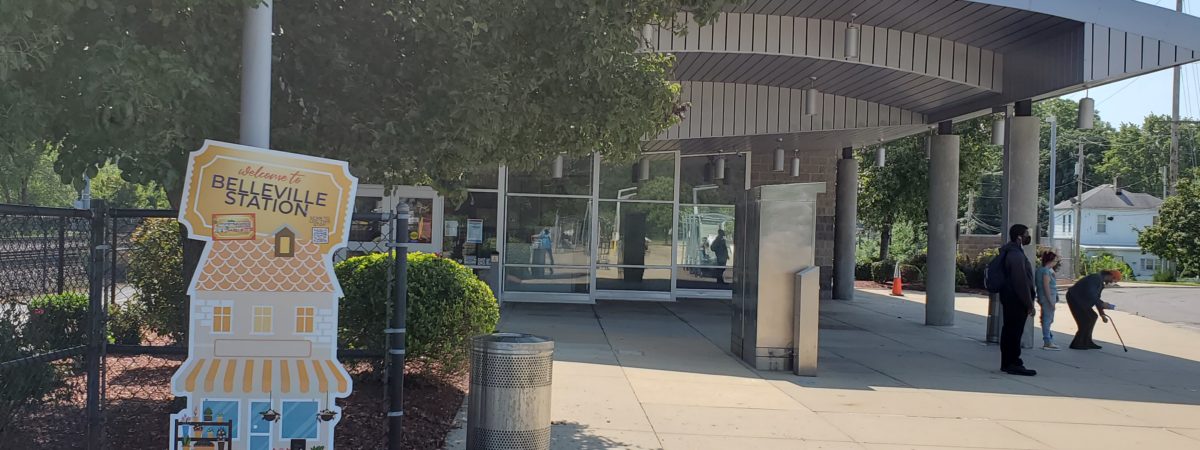
Next “Transit Stop Transformation Project” Set for the Belleville Transit Center
St. Clair County Transit District Commits $60,000 to the Project; George L. Crawford & Associates, LLC Selected as Planning and Design ConsultantsOn the heels of the recent opening of the “Transit Stop Transformation” Project at Emerson Transit Center in East St. Louis, Ill., where the concrete area between the bus bays and MetroLink entrance were converted into an interactive, playful, engaging space – Citizens for Modern Transit (CMT) and AARP in St. Louis today announced that the Belleville Transit Center will be the location of its next transformation project. St. Clair County Transit District’s Board of Commissioners approved $60,000 for the project. George L. Crawford & Associates, Inc. (DBA/CBB) has been selected as the planning and design consultant.
In the coming months, CMT and AARP in St. Louis will be working to establish both public and private community partners. Transit riders, area residents, elected officials and stakeholders will then have the opportunity to provide insight on what they would like to see at the site via design workshops, surveys and community events.
“The Belleville Transit Center will be the third transit stop to be transformed in the St. Louis region,” commented Kimberly Cella, executive director of Citizens for Modern Transit. “The first to be transformed was a Maplewood MetroBus Stop in spring 2020, followed by the Emerson Transit Center in late-summer 2021. Each of these projects are helping to create engaging, energized spaces that promote community and transit use.”
“Transit Stop Transformation” Projects are designed to showcase a deep understanding of and commitment to equitable development around transit, the impact and possibility of play, the ability for creative interventions to produce long-term impact in neighborhoods accessible for residents eight to 80 years of age, and the need for collaboration to succeed. Partners work with stakeholders to build consensus and policies to move permanent development forward – and ultimately help improve safety and security, build ridership on the system and increase activity around transit, while reinforcing the element of fun that comes with activating space around transit and building community.
